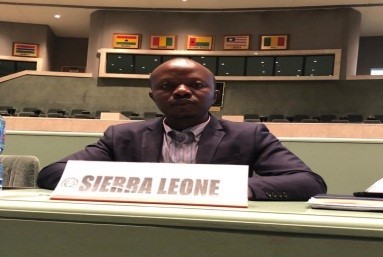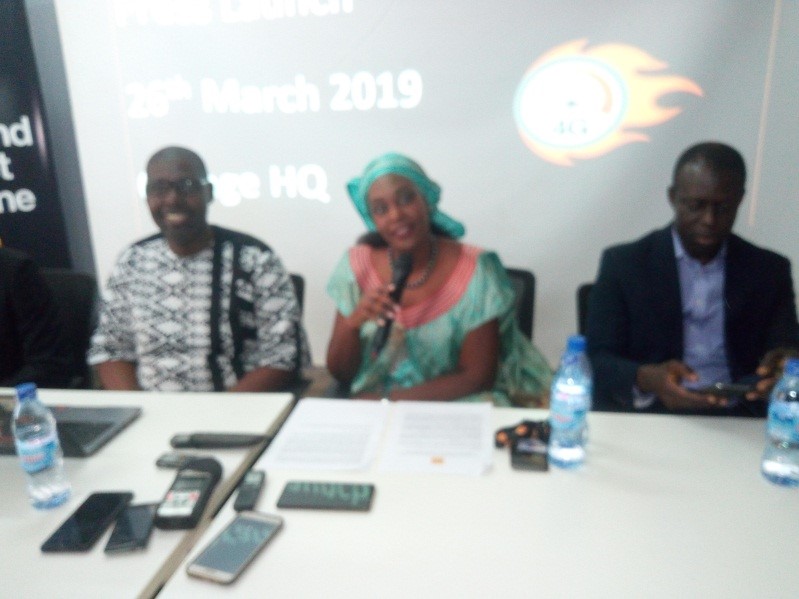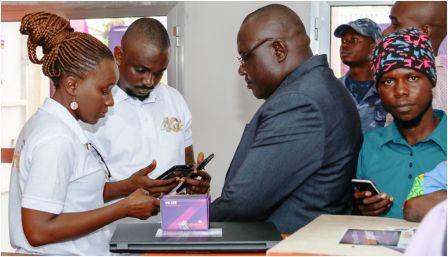Mano River Union – Challenges and Solutions (Proposed)
The Mano River Union (MRU) started in 1973 as a sign of economic cooperation between Liberia and Sierra Leone. In 1980 the Republic of Guinea was admitted as a member. The Cote D’Ivoire joined the group in 2008. Due to wars and fighting and civil strife, (ongoing in Guinea and the Cote D’Ivoire) there has been very little economic cooperation going on as a result of the “Union” effort. There is, however, ongoing trade between the nations, very little of which is documented. The amount of economic activity occurring is mostly due to the tenacity of the local populations versus “Union” action. Generally, in the last twenty years, there has been a level of instability, and insecurity, in at least one of the nations of the Union. This presents a challenge of a certain degree for nations not used to cooperating within their borders, much more with neighbors, who may be considered competitors. The fact that neighbors may come from different colonial, and neo-colonial, masters does not help the situation either, especially when combined with low levels of literacy in the general populations. (Photo: Sewanu Kponou)
The present Union represents a population total of approximately 40.5 million. According to estimates Cote D’ivoire is in control of 20.6mil, Guinea comes in at 10.1mil, Liberia boasts 3.4mil and Sierra Leone rounds up with 6.4mil. Presently most of this market that the populations in each country represent are quarantined within their borders. Individual countries go after “foreign” trade with everyone else but their neighbors. However the numbers in this case do not necessarily amount to the same revenue base as in more developed countries. That is a handicap right there as the Average Revenue Per User (ARPU) is much lower in the MRU than even South Africa, not to mention “developed” countries.
Communications
The premise of this article is not to present a reason as to why there has been relatively little success stories coming from the “Union”, but to take just one area in which the author is of the opinion that cooperation will yield very impressive results for all involved. The areas of meaningful cooperation are infinite.
Modern day communication is no longer limited to the written word or the just a telephone call. Modern day communications involves voice, text messaging, video conferencing, cable TV, amongst others. With all the listed forms of communications, there is a common thread – digital ones and zeros. The technology used to carry the transmissions are all so similar that all services can be transmitted through the same wired medium, (copper lines or optical fiber), or over the air (wireless). In just the last 15 years the pace of development has been so fast that it is a struggle for the established, well funded, commercial companies to keep up. If we take just one aspect of communications, voice, we see two somewhat distinct sub-sections i.e wireline and wireless. The traditional Plain Old Telephone System (POTS) is giving way to Voice Over Internet Protocol (VOIP) type transmission by coaxial cable and optical fiber. This is the reason why AT&T and Verizon are basically turning off their POTS systems and using VOIP technology. The present trend is in the bundling of services using one medium for telephone, internet, TV (triple play). This means new investments in the tune of millions of dollars. This is the biggest hurdle (financing) for most old government subsidized “incumbent” providers. In the case of the MRU member states all are donor dependent, at this point, and it is going to be difficult for donors to give money for running operations that have commercial equivalents. The idea of government run “Post and Telecoms”, in the past, arose from the fact that back then such services were only done by using heavy govt. subsidy. Times have since changed and commercial concerns can easily, and arguably more efficiently, operate such entities. How have some countries dealt with this situation? One solution has been to liberalise the industry and create real competition and a level playing field. However the newer challenges involve operating the same company in as many locales (countries) as possible, to be a regional, and, or global competitor. This is because of economies of scale created by ever bigger companies, giving huge discounts from equipment and service supplies Corporations with shareholders tend to be better at these newer challenges. The first true “African region” phone company is, arguably, Zain with a presence in about 12 African countries (They have just been bought by Airtel, an Indian company). There are presently about 14 different cell phone companies operating in the four MRU member states. Of these, Comium operates in SL, Liberia and Cote D’Ivoire, Orange (France Telecom) operates in Cote D’Ivoire and Guinea. The rest of the companies have operations in only one country.
In modern day communications, the internet is the backbone of all the various forms been used. Regardless of method used there is a high probability of direct use of the internet. A lot of “wireless” communications occur using internet backbone as routes for the calls. Having underscored the importance of internet connection/availability we will now focus on internet access costs to the consumer. For the sake of comparison, one service provider in the US charges $25 a month for unlimited use, 24/7 with the speed capped at 6.0Mbps. Download and 1.0Mbps upload. In Sierra Leone, one service provider charges $70 a month for total download of 2GB of data at about 64kbps download when available. No complaints even if the system works for a total two hours a day, intermittently. For the comparison to be realistic we have to do a wage analysis. In the US, the minimum wage is about $6.50/hr, giving an income of $1040/month. In Sierra Leone the average office worker is paid at about less than $100/month (actually less in most cases). We therefore have a thirty (30) times discrepancy in what is paid for internet access, at a cost level. We cannot easily quantify poor service in Sierra Leone.
Proposal
Given the background of the problems above, we have various recommendations to proffer. However the issue to be addressed in the region, first and foremost is access to the internet. Availability of access is decided by the economics involved, i.e. income of customers, and customer satisfaction. The known fact of high cost is already documented, but anecdotal evidence suggests that customer experience is just as important in the satisfaction index. The poor quality of service is directly related to “over subscription” by the retailers. Due to lack of official oversight the retailers sell, unrestricted, to all and sundry whilst utilizing the same capacity of yesteryear. The overloaded circuits shut down constantly. The amount of bandwidth paid for to the wholesalers has stayed the same whilst the number of subscribers is increasing daily. Before we beat up on the retailers we have to consider what their cost of service is. We can only guess since all these societies are not exactly open.
- This is the first proposal because this is the most urgent to be addressed and easiest to implement. Cote D’Ivoire, the newest member of the Union is the only one with access to an optical fiber cable in the form of the SAT-3. However all Union members have areas not served by optical fiber thus have to rely on very expensive and slow satellite technology. Getting all service providers in the Union to come together, including the ones in Cote D’Ivoire, and create a super buying proxy. This can land them deep discounts if buying from one satellite provider. Depending on the volume in question discounts over the 60% figure can be realised. Some of this savings can then be passed on to the consumers. Passing legislation that “encourages” cooperation will be a big help.
- Looking at the dynamics of the industry, the Union can create a bigger footprint for service providers, by creating comprehensive (see note:1) licenses for all players, with existing licensees able to operate in all countries of the Union, in all fields of communication (wireline included), that the operators chose to participate in. This will encourage new investors/investments needed to expand services for a bigger market. MRU will need to pass laws/ordinances that give incentives for economic cooperation between operators, without encouraging collusion – e.g. going to the independent tower owner operators model, hosting as many as six companies on one tower. This can be extended to a similar “open” model for fiber optic installation and operation, connecting all district headquarters and major cities, Union wide, for starters, enabling faster and cheaper access to cross border telemedicine, distance learning, e-government etc. The idea of an open model has been developed, tried and operating in East Africa via the Eassy project. An “open” project creates a level playing field of ownership which does not limit members to original entrants only, thus reducing the probability of collusion and monopoly. The more companies share infrastructure, the more savings can be passed on to the consumer and the easier it will be to offer new technolgies/services. These new models allow the telecoms operators to reduce their exposure to operational problems and allows them to concentrate on marketing. It is widely known that the personnel for operations are few and far between in developed countries much less war ravaged countries like the members of the MRU.
- The govts. have to figure a way of dropping the taxes/surcharges on internet access and finding the difference in efficient collection of dues and taxes in other areas. Cheap and widely available access to the internet is a definite precursor to advancement in modern day society.
The plight of present operators, incumbents included, will be determined by their ability to find financing and to pair cost saving with proper pricing structures, while keeping an eye on the bottom line. It is inevitable that there will be a reduction in the number of companies able to compete, but it will not necessarily mean a loss of competition since new entrants will always be at the door knocking and waiting.
These are just a few suggestions and, by no means exhaustive.
Thanks for reading.
Note: 1) A comprehensive license allows the operator to engage in more that one business within the same industry. Some nations are now allowing operators to get into cellular, landline, regular digital tv, cable tv, internet, fiber optic provisioning.
By Sewanu Kponou, Atlanta Ga.
Stay with Sierra Express Media, for your trusted place in news!
© 2010, https:. All rights reserved.






